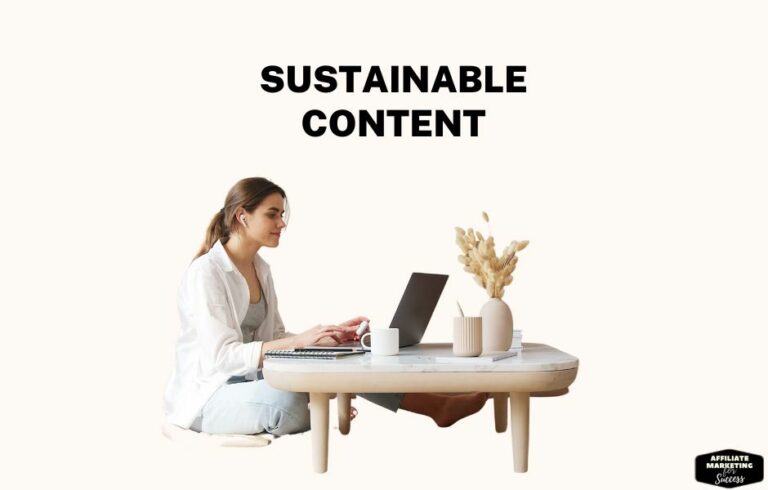Long-Term Content Strategy Guide for 2025: Proven Steps
A long-term content strategy is your roadmap for creating content that builds authority, drives traffic, and generates revenue month after month—without burning out or starting from scratch every quarter.
Most people think they need more content. They don’t. They need better content that works harder and lasts longer.
Key Takeaways:
- Define Clear Goals: Establish specific, measurable objectives for your content strategy, such as traffic targets or conversion rates, to guide your efforts effectively.
- Understand User Intent: Conduct thorough keyword research to grasp what your audience is searching for, ensuring your content meets their needs and expectations.
- Build Content Pillars: Identify 3-5 core topics that resonate with your audience, creating a network of related content to enhance authority and drive organic traffic.
- Create Evergreen Content: Focus on producing high-quality, timeless content that provides ongoing value and drives traffic over time, maximizing return on investment.
- Promote Strategically: Implement a robust distribution plan across various channels to reach your audience, engage with them, and encourage sharing of your content.
- Monitor and Adapt: Regularly analyze content performance metrics to refine your strategy, ensuring continuous improvement and alignment with business goals.
What Is a Long-Term Content Strategy?
Think of it like planting trees instead of flowers. Flowers look nice for a season. Trees grow stronger every year.
A long-term content strategy means creating content that:
- Stays useful for years
- Gets better with age
- Builds on what came before
- Makes money while you sleep
This isn’t about posting daily on social media. It’s about building something that matters.
Why Most Content Strategies Fail
Here’s what happens to most people:
They start strong. Post every day for two weeks. Then life happens. They miss a day. Then a week. Then they quit.
Sound familiar?
The problem isn’t motivation. It’s the wrong approach.
Short-term thinking creates:
- Content that expires fast
- Constant pressure to create
- Burnout after three months
- Zero lasting results
Long-term thinking creates:
- Evergreen content that works forever
- Systems that run themselves
- Compound growth over time
- Real business assets
The Foundation: Content Pillars
Content pillars are your main topics. The big ideas everything else connects to.
Pick 3-5 pillars based on:
- What your audience needs
- What you know well
- What makes money
For example, if you run a fitness site:
- Nutrition basics
- Workout routines
- Recovery methods
- Mindset training
- Equipment reviews
Each pillar becomes a hub. Each hub spawns dozens of related posts.
Building Your Pillar Pages
Pillar pages aren’t regular blog posts. They’re comprehensive guides that cover everything about a topic.
Structure them like this:
- 3,000+ words minimum
- Multiple sections with headers
- Internal links to related content
- Updated regularly
- Optimized for featured snippets
These pages become your SEO powerhouses. They rank for competitive keywords and send traffic to your other content.
Content Clusters: The Secret Weapon
Content clusters work like a spider web. Your pillar page sits in the center. Supporting content branches out from there.
Here’s how to build them:
Step 1: Create your pillar page
Step 2: Write 10-20 supporting articles
Step 3: Link everything together
Step 4: Update and expand over time
This structure tells Google you’re an expert. It keeps readers on your site longer. And it makes your content work as a team.
Cluster Example in Action
Let’s say your pillar is “Email Marketing for Beginners.”
Supporting content might include:
- How to choose an email service
- Writing subject lines that get opened
- Building your email list from zero
- Email automation basics
- Measuring email performance
Each piece links back to the pillar. The pillar links out to each piece. Google sees the connection. Your rankings improve across the board.
The Content Calendar That Actually Works
Forget complicated spreadsheets. Your content calendar needs three things:
- Publishing schedule – How often you post
- Content themes – What you post about
- Promotion plan – How you share it
Start simple:
- Monday: New pillar content
- Wednesday: Supporting article
- Friday: Update old content
That’s it. Three posts per week. Sustainable for years.
Batching Content Creation
Write multiple pieces at once. It’s faster and keeps your voice consistent.
Try this schedule:
- Week 1: Research and outline
- Week 2: Write first drafts
- Week 3: Edit and optimize
- Week 4: Schedule and promote
This gives you a month of content in focused bursts. No daily scrambling.
Evergreen Content: Your Long-Term Assets
Evergreen content stays relevant for years. It’s the difference between a news article and a how-to guide.
Examples of evergreen content:
- Ultimate guides
- How-to tutorials
- Resource lists
- Tool comparisons
- FAQ pages
These posts generate traffic long after you publish them. They’re investments, not expenses.
Making Content More Evergreen
Transform time-sensitive content into evergreen assets:
Instead of: “Best Email Tools 2024”
Write: “How to Choose Email Marketing Software”
Instead of: “This Week’s Social Media Updates”
Write: “Social Media Strategy Fundamentals”
Small changes. Big difference in lifespan.
Strategic Content Distribution
Creating content is half the battle. Distribution wins the war.
Your distribution strategy should include:
Owned channels:
- Your website
- Email list
- Social media profiles
Earned channels:
- Guest posts
- Podcast interviews
- Media mentions
Paid channels:
- Facebook ads
- Google ads
- Sponsored content
Start with owned channels. Build earned opportunities. Add paid promotion when profitable.
The 80/20 Distribution Rule
Spend 20% of time creating content. Spend 80% promoting it.
Most people do the opposite. That’s why their content fails.
Promotion tactics that work:
- Email your list
- Share in relevant groups
- Reach out to influencers
- Repurpose for different platforms
- Update and reshare old content
Content Optimization: Making Good Content Great
SEO isn’t optional. But it’s not everything either.
Optimize for humans first:
- Clear, scannable formatting
- Valuable information
- Engaging writing
- Actionable advice
Then optimize for search engines:
- Target specific keywords
- Use headers properly
- Include internal links
- Optimize meta descriptions
The Update Strategy
Old content isn’t dead content. Update it regularly:
- Add new information
- Fix broken links
- Improve formatting
- Update screenshots
- Expand thin sections
This takes less time than creating new content. And it often performs better.
Measuring What Matters
Track metrics that matter for long-term growth:
Traffic metrics:
- Organic traffic growth
- Pages per session
- Average session duration
Engagement metrics:
- Email subscribers
- Social shares
- Comments and feedback
Revenue metrics:
- Affiliate commissions
- Product sales
- Ad revenue
Ignore vanity metrics like total pageviews. Focus on trends and quality.
The Monthly Review Process
Set aside time each month to review:
- What content performed best?
- What topics resonated most?
- Where did traffic come from?
- What made money?
- What needs updating?
Use these insights to guide next month’s content.
Building Authority Through Consistency
Authority comes from showing up consistently over time. Not from viral hits.
Ways to build authority:
- Publish on a regular schedule
- Cover topics in depth
- Share unique perspectives
- Back claims with data
- Engage with your audience
Consistent publishing beats perfect content every time.
The Compound Effect
Content compounds like interest:
- Month 1: 10 posts, 100 visitors
- Month 6: 60 posts, 1,000 visitors
- Month 12: 120 posts, 10,000 visitors
- Month 24: 240 posts, 100,000 visitors
Each piece builds on the last. Traffic grows exponentially, not linearly.
Content Maintenance: The Forgotten Strategy
Most people publish and forget. Smart marketers maintain and improve.
Maintenance tasks:
- Update outdated information
- Add new sections
- Improve internal linking
- Refresh images
- Optimize for new keywords
Schedule maintenance quarterly. It’s easier than starting fresh.
The 70-20-10 Rule
Allocate your time:
- 70% creating new content
- 20% updating existing content
- 10% experimenting with new formats
This balance keeps content fresh while building on what works.
Scaling Your Content Strategy
Once your foundation is solid, scale strategically:
Scaling options:
- Hire writers
- Create templates
- Build systems
- Automate distribution
- Expand topics
Don’t scale until you have:
- Consistent traffic
- Proven content types
- Clear processes
- Revenue coming in
Building a Content Team
When ready to expand:
- Document your process
- Create style guides
- Hire one person at a time
- Train thoroughly
- Monitor quality closely
Start with freelancers. Move to employees when volume justifies it.
Common Mistakes to Avoid
Mistake 1: Chasing trends
Trends die fast. Fundamentals last forever.
Mistake 2: Quantity over quality
Ten great posts beat 100 mediocre ones.
Mistake 3: Ignoring SEO
SEO brings free traffic. Don’t skip it.
Mistake 4: Not promoting enough
Great content needs great promotion.
Mistake 5: Giving up too soon
Success takes months, not days.
Tools for Long-Term Success
Essential tools for content strategy:
Planning tools:
- Trello or Asana for calendars
- Google Sheets for tracking
- Ahrefs for keyword research
Creation tools:
- Google Docs for writing
- Canva for graphics
- Grammarly for editing
Analysis tools:
- Google Analytics for traffic
- Search Console for SEO
- Hotjar for user behavior
Start with free versions. Upgrade as you grow.
The First 90 Days
Your action plan:
Days 1-30:
- Choose your pillars
- Research keywords
- Create content calendar
- Write first pillar page
Days 31-60:
- Publish supporting content
- Build email list
- Start promotion
- Track initial metrics
Days 61-90:
- Analyze performance
- Update underperformers
- Double down on winners
- Plan next quarter
Consistency beats perfection. Start today.
Turning Strategy Into Revenue
Content without monetization is a hobby. Add revenue streams:
Direct monetization:
- Affiliate marketing
- Product sales
- Course creation
- Coaching services
Indirect monetization:
- Email list building
- Brand partnerships
- Speaking opportunities
- Consulting leads
Start with one revenue stream. Master it. Then add more.
The Revenue Timeline
Realistic expectations:
- Month 1-3: Building foundation
- Month 4-6: First revenue
- Month 7-12: Consistent income
- Year 2+: Scaling profits
Patience pays. Most quit right before breakthrough.
Your Next Steps
Stop reading. Start doing.
- Pick your content pillars today
- Create your content calendar
- Write your first pillar page
- Commit to 90 days
Long-term content strategy isn’t complicated. It’s just most people want shortcuts that don’t exist.
The path is simple:
- Create valuable content
- Optimize for search
- Promote consistently
- Update regularly
- Track what works
- Do more of that
That’s it. That’s the strategy that builds real businesses.
Ready to stop chasing tactics and build something that lasts? Your audience is waiting. Your business depends on it. And your future self will thank you.
The best time to start was yesterday. The second best time is now.
What are you waiting for?
References:
HubSpot Customer Pro Tip: the Marketing Performance section of your HubSpot Dashboard can be used to customize and track your monthly progress against custom SMART goals that you set.
As a result, it takes time. To be exact, you can expect to need about six to nine months of hard work to start seeing tangible marketing results. But once you get there, it pays off big time: compared to traditional marketing tactics, content marketing costs about 62% less while generating three times as many leads.
And we know that authenticity works. Eighty-eight percent of consumers say that authenticity is an important factor when choosing brands they like or support. So don’t delay – find your voice today!
To learn more about the best time to send email, check out this resource.
This marketing tactic combines instantaneous results with extremely low cost. Across industries, for instance, the average cost per click on Facebook is about $0.23 in the United States. Unfortunately, those clicks aren’t always relevant, so conversion rates for clicks from Facebook ads tend to be relatively low.
Search ads are targeted by keywords and phrases, providing significant leeway in terms of targeting. If you know what terms your audience tends to search for or perform some basic keyword research, your messaging can get in front of your audience as they use Google or Bing, two of the most-visited websites in the United States.
I’m Alexios Papaioannou, an experienced affiliate marketer and content creator. With a decade of expertise, I excel in crafting engaging blog posts to boost your brand. My love for running fuels my creativity. Let’s create exceptional content together!











